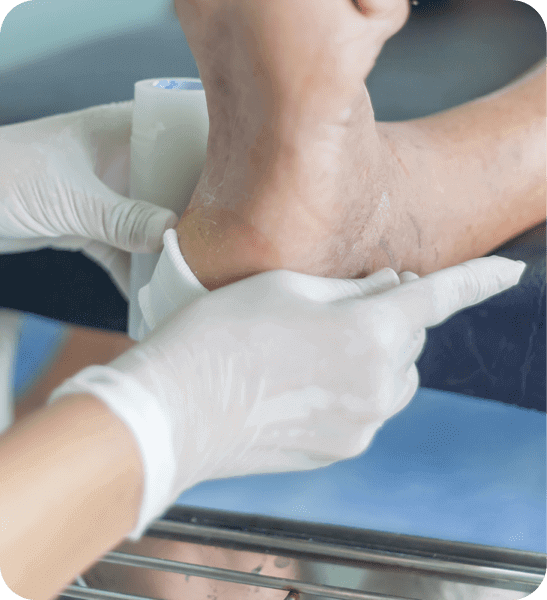Hyperbaric Oxygen Therapy for Dementia

How Hyperbarics Helps
Reduces Cell Death (Apoptosis)
Increases Neuroplasticity (the brain’s ability to regrow and rewire itself)
Can help idling neurons become active again in the brain
Reduces Inflammation in the Brain
Builds New Blood Vessels, including those in the brain
Increases Oxygen
Increases the length of telomeres. Decreasing telomere size is a key factor in aging
Generally Improves Dementia Symptoms
What the Research Says
Hyperbaric Oxygen Therapy (HBOT) is gaining attention as a potential therapeutic approach for dementia, particularly for conditions such as vascular dementia. By administering 100% oxygen in a pressurized environment, HBOT significantly increases the amount of oxygen dissolved in the blood, enhancing oxygen delivery to the brain. This improved oxygenation can mitigate the effects of hypoxia—a common issue in vascular dementia—thereby supporting the survival and function of neurons. Increased oxygen levels can promote cellular repair and reduce the extent of damage caused by ischemic events, potentially slowing the progression of cognitive decline.
One of the key mechanisms by which HBOT may benefit dementia patients is through the promotion of neuroplasticity. Neuroplasticity refers to the brain's ability to reorganize itself by forming new neural connections. This process is crucial for learning, memory, and recovery from brain injuries. HBOT has been shown to stimulate neuroplasticity by enhancing the growth of new blood vessels (angiogenesis) and encouraging the proliferation of neural stem cells. These effects can improve cognitive functions, such as memory and executive function, which are typically impaired in dementia patients.
Clinical studies and observational data have begun to shed light on the potential cognitive benefits of HBOT for dementia patients. For instance, patients undergoing HBOT have reported improvements in memory, attention, and overall cognitive function. These improvements are believed to be linked to the enhanced oxygen delivery and the subsequent reduction in neuroinflammation—a common pathological feature in dementia. By decreasing inflammatory processes in the brain, HBOT can help to protect neurons from further damage and promote a healthier neural environment, which is essential for cognitive maintenance and recovery.
Despite these promising findings, it is important to note that the use of HBOT for dementia is still an emerging field of study.
Vascular dementia is the most studied form of dementia to be treated with hyperbaric oxygen therapy. Given that we have no conclusive tests to identify Alzheimer’s, there are fewer studies on Alzheimer’s and HBOT in particular. If you know someone diagnosed with vascular dementia, consider using HBOT as a treatment for vascular dementia.
We at Bay Area Hyperbarics have treated numerous dementia cases during our 25 years of healing our community. Our dementia patients have improved significantly.
More extensive clinical trials are needed to fully understand the efficacy, optimal protocols, and long-term benefits of HBOT in dementia treatment. However, given the encouraging preliminary results and the physiological rationale supporting its use, HBOT represents a promising adjunctive therapy for dementia. It should be considered for patients who have not responded adequately to conventional treatments, always under the guidance of a medical professional in a certified hyperbaric facility. As research continues to evolve, HBOT may become an integral part of the therapeutic landscape for managing dementia.
Research Studies
Systematic Review and Meta-Analysis on Alzheimer's Disease
Systematic Review and Meta-Analysis on Alzheimer's Disease
Hyperbaric oxygen ameliorates cognitive impairment in patients with Alzheimer's disease and amnestic mild cognitive impairment
Hyperbaric oxygen ameliorates cognitive impairment in patients with Alzheimer's disease and amnestic mild cognitive impairment
Patient Experiences
-

Kevin, 18
Improved functionality was hampered due to injury caused while playing football.
Kevin had suffered several concussions while playing football. Previously a very good student, he found himself unable to attend High School classes. Instead, he lay most days on his bed in his darkened room depressed, unable to read, talk, or hang out with his friends. His parents were frantic. Kevin had tried prescription drugs and therapy which helped some with his systems. However, they did not eliminate the headaches, fatigue or improve his mood. They did not get him up and back to school. After HBOT, Kevin could attend school again and interact with his friends. HBOT made a major impact on on bringing back Kevin’s cognitive and emotional health and well-being.
-

Mara, 3 months old
Gained the ability to sit up, which she was unable to do because of severe brain trauma at birth.
Mara had severe brain trauma at birth, so at 3 months old, her mom brought her into HBOT. She had a severely misshapen head, a tube in her stomach to feed her, and a tube to help her breath. Tragically, Mara's mother was told her baby would never recover nor respond like a normal child. She had already returned to the hospital twice for complications with her conditions. Mara's mother brought her in 5 days a week for treatment with HBOT. When Mara finished hyperbarics, her tubes had been removed. She could breathe on her own. She was able to eat and swallow food like a normal child. And Mara was strong enough to sit up and wave bye bye when encouraged. The nurse in the Pediatrician's office burst into tears of joy, when she saw the improvements in Mara's conditions.
Physicians: Refer a Patient
You Submit Your Patient’s Information
We Get Authorizations
Patient Starts HBOT

Related Articles
Research on Hyperbaric Oxygen Therapy
-
What is Hyperbaric Oxygen Therapy?
Hyperbaric oxygen therapy treats medical conditions with 100% oxygen in a pressurized hyperbaric chamber. The patient lies or sits in the chamber. The oxygen then saturates the plasma in the blood, allowing oxygen to easily flow throughout the body and reach even areas that are injured or diseased, which typically receive less oxygen. The mechanisms of hyperbaric oxygen therapy include stimulating and mobilizing stem cells, down-regulating inflammatory genes, up-regulating reproductive cells and stimulating DNA. HBOT also regrows tiny blood vessels, and stimulates the growth of new healthy cells in the brain, bones, skin, organs, and tissues. People seek hyperbaric oxygen therapy to heal physical damage in their bodies and to promoting health and anti-aging.
-
Does HBOT kill cancer cells?
Current research indicates that hyperbaric oxygen does not kill cancer cells. However, there has been a small amount of research indicating that hyperbaric oxygen might reduce the size of certain tumors. Also, there has been a study on mice using hyperbaric oxygen, along with a ketogenic diet, to reduce tumors. Hyperbaric oxygen causes many different healing modalities to kick into gear. Could its effect on strengthening the immune system inhibit the growth of cancer cells? Nobody knows. There are numerous studies conclusively showing that hyperbaric oxygen does not encourage cancer cells or tumors to grow. Some patients claim the hyperbaric oxygen makes them feel a lot more comfortable and functional after chemotherapy and also during healing. Note that some chemotherapy drugs are not to be used with hyperbaric oxygen, as the chemotherapy drugs can be enhanced and thus become toxic. A good hyperbaric oxygen facility (such as Bay Area Hyperbarics) will always call the chemotherapy manufacturer to ensure that hyperbaric oxygen therapy will be helpful and not damaging to the patient.
-
IWhat is the CPT code for HBOT?
The CPT code for HBOT is G0277.
-
Does Medicare cover HBOT?
Medicare covers Hyperbaric Oxygen Therapy for approved conditions, and many insurance companies also cover approved conditions. If your condition is not approved by your insurance, we can discuss our special rates. Give us a call at (408) 356–7438. We are happy to discuss your options with you.
-
Can HBOT help Neuropathy?
Hyperbaric treatments help heal neuropathy by regrowing small blood vessels and nerves that have died from disease, injuries from radiation and aging. Patients often experience numbness and or pain when they start treatment. Hyperbaric treatments most often bring back sensation and make, for example, walking easier and more enjoyable.
-
Why would a physician consider HBOT?
A physician would consider using hyperbaric chamber therapy under a variety of situations. Physicians most typically refer patients to hyperbarics when the patient is not healing with traditional medical interventions and hyperbaric chamber therapy is approved by Medicare for this condition. Some patients experience significant unresolved pain and unremitting disease states that the mechanisms of hyperbaric oxygen therapy in a hyperbaric chamber are known to affect, such as the down regulation of inflamatory genes. For an example, some patients have experienced severe, unremitting hives with itching, which did not improve with any specialists interventions. Some physicians will consider hyperbaric chamber therapy if the patient has no other good avenues for improving their failing health, and they know the hyperbaric chamber therapy is safe and will not harm the patient.
-
What is Hypebaric Oxygen Therapy?
Hyperbaric Oxygen Therapy (HBOT) Hyperbaric Oxygen Therapy (HB0T) is a medical treatment where you inhale 100% oxygen in a chamber with increased atmospheric pressure. HBOT injects 400x the oxygen into your tissues and bones and mobilizes stem cells. It regrows healthy tissues in the brain, blood vessels, skin and bones. It also reduces pain and swelling, and speeds recovery. It is simple, effective and painless.
Have more Questions?




